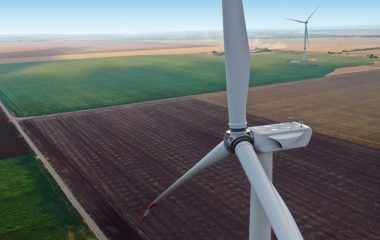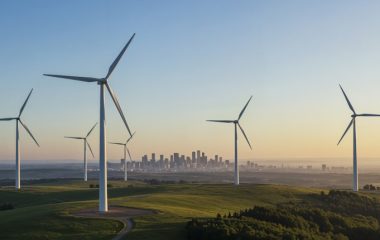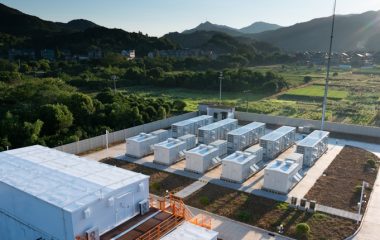
Photo: WindEurope
The capital city of Basque Country, which aims to become a major offshore energy hub, is hosting WindEurope’s Annual Event on March 20-22. The association said more than 12,000 attendees in Bilbao will be able to hear about the effects of the European Union’s Wind Power Package and the upcoming elections for the European parliament on their business.
WindEurope’s Annual Event on March 20-22 comes at a crucial time, the organizers said. The conference and exhibition in Bilbao in Spain’s Basque Autonomous Community will feature more than 40 sessions with over 250 speakers. They include European commissioners, government ministers, CEOs and experts, the organization added in its invitation.
The gathering will cover all the big issues facing the industry, WindEurope pointed out. It expects more than 12,000 attendees. They can register only online, on this webpage.
What to expect
WindEurope’s Annual Event will be a chance to learn about the significance of the EU’s recent Wind Power Package, the Wind Energy Charter, endorsed by 26 member states, and the European elections in June, according to the announcement. “This is a chance to hear about what all this means for you and your business. And to see the value of our industry up close – bringing jobs, growth and security to all Europeans,” the association said.
Companies from the whole wind value chain will set up over 450 stands in the sold-out exhibition, WindEurope revealed. It is preparing lots of opportunities for meetings, such as the Startup Pavilion and Social & Side events at the venue and around Bilbao.
The organizers stressed that Spain is one of the most important countries on the continent, with 27 GW in wind power capacity. Its offshore wind roadmap targets up to 3 GW of floating wind by 2030. And the Basque Country in particular aims to become a major offshore energy hub.
Record investments in offshore wind in Europe
As for a wider perspective of the offshore wind segment, things are looking up again, WindEurope said in an earlier report. Last year a record 4.2 GW of capacity came online or 40% more than in 2022. In the EU alone, the level surged to 3 GW from under 1 GW.
The Netherlands tops the chart with the Hollandse Kust Zuid facility of 1.5 GW, now the world’s largest wind farm. Investment decisions worth EUR 30 billion in total from 2023 translate to 9 GW envisaged to be installed over the coming years.
The supply chain is also seeing a turnaround, with new factories announced in Poland, Denmark, Germany, the Netherlands and Spain, WindEurope noted.
Britain could attract record investment in offshore wind now that it boosted the ceiling price for the upcoming offshore auction
The United Kingdom raised the ceiling price by 66% for the upcoming offshore auction, after the previous round failed to attract any bids for contracts for difference (CfDs). The move could help the country attract record investment in offshore wind in 2024, according to WindEurope.
“That’s not the only good news from the UK: Orsted reached final investment decision on Europe’s biggest project, the 2.9 GW Hornsea 3 offshore wind farm in the UK. RWE acquired the 4.2 GW Norfolk Offshore Wind Zone portfolio and underlined its determination to resume the 1.4 GW Norfolk Boreas project, which has previously been halted,” the report adds.
Big year for offshore wind auctions
If all countries run their auctions as planned, at least 40 GW will be auctioned in 2024, after 13.5 GW in 2023. But 70% of all auctions in 2023 used uncapped negative bidding, asking wind energy developers to pay for the right to build an offshore wind farm. This needs to change, WindEurope warned.
“Developers have to cover the additional costs of negative bids. They can either pass them on to the electricity consumers, who are already suffering from high prices, or on to the wind energy supply chain, which is already struggling with inflation and cost increases. Negative bidding also adds to the overall project risk which in turn drives up capital costs. This is particularly challenging with higher interest rates now,” the association underscored.
Current offshore wind installation rates are too low to meet climate and energy security targets
Poland’s first commercial offshore wind farm, the 1.2 GW Baltic Power project, reached final investment decision.
Germany, Denmark, the UK, France and the Netherlands are the top five in capacity set for auction over the next two years.
Europe is set to build around 5 GW of offshore wind annually over the next three years, WindEurope calculated. It’s not enough to reach climate and energy security targets, it added. “European countries will need to build 24 GW a year in the period 2027-2030 to reach the 2030 targets. But today’s offshore wind supply chain can only produce around 7 GW each year,” the organization said.









Be the first one to comment on this article.